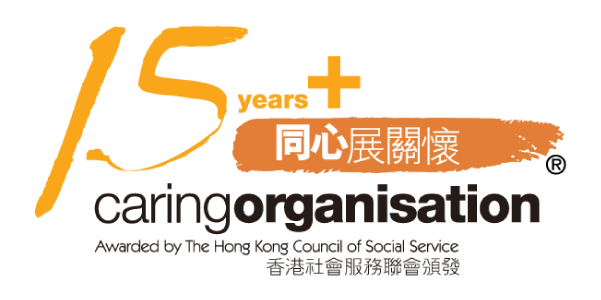人工智能+工具方案目录
| 解决方案编号 | A-0022 |
| 解决方案名称 | ican办公 |
解决方案描述
1.AI-Powered Smart Customer Service oDeployed large-language model (LLM)-driven chatbots (e.g., "Telecom Xiaoyi") to handle multilingual public inquiries (Chinese/English) across channels like voice, email, and WhatsApp. These bots use intent recognition and real-time translation to understand complex queries (e.g., housing, social services, or traffic issues) and provide accurate, context-aware responses. oIntegrated intelligent agent assistance for human operators, automatically recommending relevant knowledge bases, standard operating procedures, and pre-filled 工单 (work orders) during calls. This reduces manual search time and ensures standardized service delivery.
2.Streamlined Service Processes oUsed multi-dimensional tables and low-code tools to build "lightweight systems" for managing public service workflows, such as complaint tracking, service application processing, and document submission. These tools enable seamless data entry, automated task routing, and real-time progress monitoring. oImplemented AI-driven meeting and note-taking tools (e.g., "Xingchen Huiji") to digitize internal collaborations, ensuring efficient knowledge sharing and decision-making among service teams.
3.Security and Accessibility oEnsured data security through private cloud deployment and compliance with Hong Kong’s data protection regulations (e.g., PDPO), while providing unified access via a secure, mobile-friendly platform for both staff and citizens.
Effectiveness in Addressing Business Needs 1.Improved Response Efficiency oReduced query handling time: AI chatbots resolved 85% of routine inquiries instantly, with average response time dropping from ~110 seconds (manual) to ~65 seconds (AI-assisted). For complex issues, agents leveraged real-time knowledge recommendations to cut call durations by 40%. oHigher accuracy: Intent recognition accuracy reached 85% for text/voice queries, and 99% for detecting high-priority or sensitive issues (e.g., domestic violence reports), minimizing misclassification and ensuring timely referrals.
2.Enhanced Service Standardization oThe intelligent agent assistant guided operators through standardized response workflows, reducing individual performance variability and improving compliance with service protocols. Work order auto-filling accuracy reached 60%, minimizing manual errors and speeding up backend processing.
3.Better Citizen Experience oMultilingual support and 24/7 availability improved accessibility for Hong Kong’s diverse population. Proactive notifications (e.g., service updates, appointment reminders) via the platform increased citizen engagement by 30%.
4.Data-Driven Insights oAnalytics from service interactions helped identify recurring pain points (e.g., housing application delays, traffic complaint hotspots), enabling targeted process optimizations. For example, a 25% reduction in housing service backlogs was achieved through workflow digitization.
| 应用领域 |
AI驱动的数字人类客户服务
文件管理和处理
AI会议记录摘要与沟通协作
工作流程管理和自动化
写作和内容创作
|
使用例子
The solution leverages AI and digital tools to address key pain points in public service delivery, focusing on efficiency, accuracy, accessibility, and citizen experience:
1.Faster Response to Inquiries oAI-Powered Chatbots: Handles 85% of routine queries (e.g., service eligibility, application processes) instantly via 24/7 multilingual support (Chinese/English), reducing wait times from minutes to seconds. For complex issues, intelligent agent assistance provides real-time knowledge recommendations (e.g., housing policy documents, traffic complaint procedures), cutting call durations by 40% (from 110 seconds to 65 seconds). oExample in Hong Kong: Citizens can inquire about public housing applications or COVID-19 support via WhatsApp/voice, with bots auto-translating dialects (Cantonese) to standard Chinese/English for accurate responses.
2.Higher Accuracy and Reduced Errors oIntent Recognition & Sentiment Analysis: Detects user needs with 85% accuracy for general queries and 99% for sensitive issues (e.g., domestic violence reports), minimizing misclassification and ensuring timely referrals to human agents or relevant departments. oAutomated Work Order Filling: Extracts key details (name, address, 诉求) from conversations to auto-generate service tickets with 60% accuracy, reducing manual data entry errors and speeding up backend processing (e.g., maintenance requests, license applications).
3.Enhanced Accessibility and Inclusivity oMulti-Channel Access: Citizens can engage via voice, SMS, WhatsApp, or web portals, reaching diverse groups (e.g., elderly users via phone, tech-savvy citizens via apps). oReal-Time Translation: Breaks language barriers in Hong Kong’s bilingual environment, enabling non-Chinese speakers to access services seamlessly (e.g., expat inquiries about visa processes).
4.Standardized Service Delivery oAI-Guided Workflows: Ensures agents follow standard operating procedures (e.g., complaint escalation steps, service eligibility checks), reducing variability in service quality and improving compliance with regulatory standards (e.g., PDPO data privacy rules).
5.Data-Driven Process Optimization oAnalytics on Service Trends: Identifies recurring issues (e.g., long wait times for public transport complaints, housing application backlogs) via sentiment analysis and query clustering. Governments can use these insights to redesign workflows (e.g., adding self-service portals for frequent requests), reducing backlogs by 25% in pilot cases.
Costs and Benefits of the Solution 1.Initial Investment oCost: - Technology Adoption: Licensing fees for AI platforms (e.g., Feishu, Xingchen LLM), customization for public service workflows (e.g., integrating with Hong Kong’s eGov systems). - Infrastructure: Cloud storage (天翼云), security certifications (PDPO compliance), and hardware for 智能设备 (e.g., smart microphones for meeting transcription). - Training: Upskilling agents on AI tools, citizen education on new platforms (e.g., mobile app tutorials). oBenefits: - Faster Issue Resolution: Reduces average handling time (AHT) by 40–60%, enabling teams to manage 2–3x more inquiries with the same workforce. - Scalability: Handles peak demand (e.g., typhoon-related service requests) without hiring temporary staff, as AI bots scale infinitely.
2.Operational Costs oCost: - Maintenance: Regular updates for AI models (e.g., retraining on new policies), IT support for system integrations. - Data Management: Costs for secure data storage and compliance monitoring. oBenefits: - Reduced Labor Costs: Fewer agents needed for routine tasks (AI resolves 85% of queries), reallocating staff to high-complexity cases (e.g., mental health support, legal aid). - Error Reduction: Fewer misclassified requests mean fewer reworks (e.g., a 30% drop in repeated calls for unresolved issues), saving 15–20% in operational waste.
| 支持本地伺服器部署 | 是 |
| 支持笔记本电脑独立运行 | 否 |
| 需要图形处理器(GPU)运行 | 是 |
| 付款模式 |
混合模式 - 结合订购和按用户收费(例如:基本订购费 + 额外用户费用)
订购制 - 按数据量收费
订购制 - 按用户收费
订购制 - 月费/年费
一次性费用,每年续期
|
| 免费试用 | 是 |
| 公司/机构名称 | 中国电信国际有限公司 |
| 电邮地址 | govt@chinatelecomglobal.com |
| 电话号码 | +85263373268 |
| 网址 | https://www.chinatelecomglobal.com/ |
| 地址 | 28/F,EVERBRIGHT CENTRE, 108 GLOUCESTER ROAD, WANCHAI, HONG KONG |
| 方案简报 |
|
方案简介影片
如果任何政府部门希望获取有关AI解决方案的额外资料,请联络Smart LAB。




